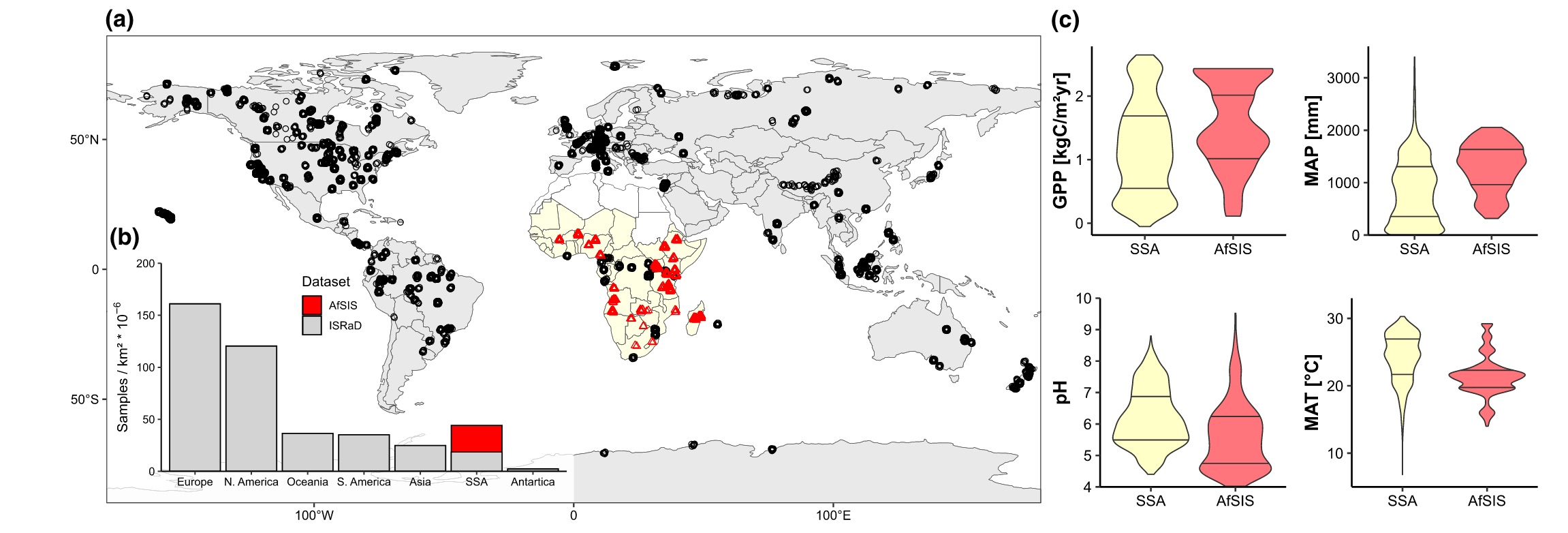How old is soil organic carbon?
Controls on timescales of soil organic carbon persistence across sub-Saharan Africa

In this paper, a subset of LDSF sites sampled during the Africa Soil Information Service (AfSIS) project were taken from the soil archive at ICRAF in nairobi and analyzed to investigate the timescales of soil organic carbon (SOC) persistence across sub-Saharan Africa.
Abstract
Given the importance of soil for the global carbon cycle, it is essential to understand not only how much carbon soil stores but also how long this carbon persists. Previous studies have shown that the amount and age of soil carbon are strongly affected by the interaction of climate, vegetation, and mineralogy. However, these findings are primarily based on studies from temperate regions and from fine-scale studies, leaving large knowledge gaps for soils from understudied regions such as sub-Saharan Africa. In addition, there is a lack of data to validate modeled soil C dynamics at broad scales. Here, we present insights into organic carbon cycling, based on a new broad-scale radiocarbon and mineral dataset for sub-Saharan Africa. We found that in moderately weathered soils in seasonal climate zones with poorly crystalline and reactive clay minerals, organic carbon persists longer on average (topsoil: 201 ± 130 years; subsoil: 645 ± 385 years) than in highly weathered soils in humid regions (topsoil: 140 ± 46 years; subsoil: 454 ± 247 years) with less reactive minerals. Soils in arid climate zones (topsoil: 396 ± 339 years; subsoil: 963 ± 669 years) store organic carbon for periods more similar to those in seasonal climate zones, likely reflecting climatic constraints on weathering, carbon inputs and microbial decomposition. These insights into the timescales of organic carbon persistence in soils of sub-Saharan Africa suggest that a process-oriented grouping of soils based on pedo-climatic conditions may be useful to improve predictions of soil responses to climate change at broader scales.